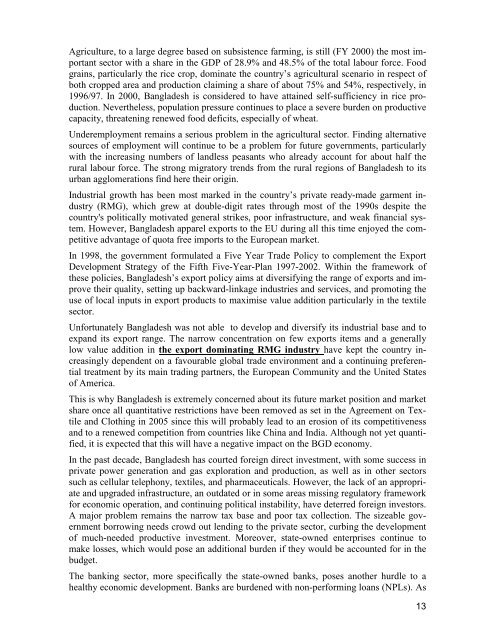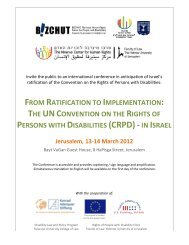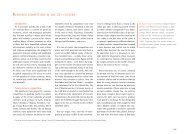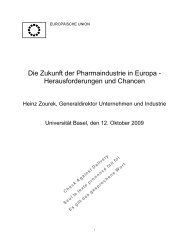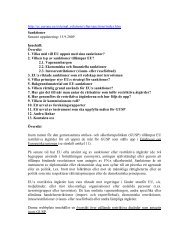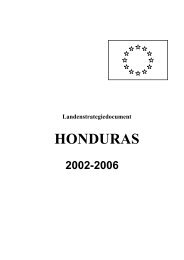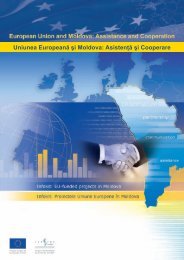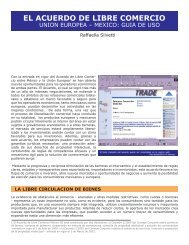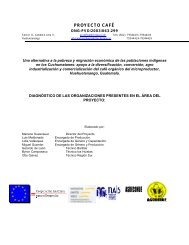EC Country Strategy Paper for Bangladesh 2002-2006
EC Country Strategy Paper for Bangladesh 2002-2006
EC Country Strategy Paper for Bangladesh 2002-2006
You also want an ePaper? Increase the reach of your titles
YUMPU automatically turns print PDFs into web optimized ePapers that Google loves.
Agriculture, to a large degree based on subsistence farming, is still (FY 2000) the most important<br />
sector with a share in the GDP of 28.9% and 48.5% of the total labour <strong>for</strong>ce. Food<br />
grains, particularly the rice crop, dominate the country’s agricultural scenario in respect of<br />
both cropped area and production claiming a share of about 75% and 54%, respectively, in<br />
1996/97. In 2000, <strong>Bangladesh</strong> is considered to have attained self-sufficiency in rice production.<br />
Nevertheless, population pressure continues to place a severe burden on productive<br />
capacity, threatening renewed food deficits, especially of wheat.<br />
Underemployment remains a serious problem in the agricultural sector. Finding alternative<br />
sources of employment will continue to be a problem <strong>for</strong> future governments, particularly<br />
with the increasing numbers of landless peasants who already account <strong>for</strong> about half the<br />
rural labour <strong>for</strong>ce. The strong migratory trends from the rural regions of <strong>Bangladesh</strong> to its<br />
urban agglomerations find here their origin.<br />
Industrial growth has been most marked in the country’s private ready-made garment industry<br />
(RMG), which grew at double-digit rates through most of the 1990s despite the<br />
country's politically motivated general strikes, poor infrastructure, and weak financial system.<br />
However, <strong>Bangladesh</strong> apparel exports to the EU during all this time enjoyed the competitive<br />
advantage of quota free imports to the European market.<br />
In 1998, the government <strong>for</strong>mulated a Five Year Trade Policy to complement the Export<br />
Development <strong>Strategy</strong> of the Fifth Five-Year-Plan 1997-<strong>2002</strong>. Within the framework of<br />
these policies, <strong>Bangladesh</strong>’s export policy aims at diversifying the range of exports and improve<br />
their quality, setting up backward-linkage industries and services, and promoting the<br />
use of local inputs in export products to maximise value addition particularly in the textile<br />
sector.<br />
Un<strong>for</strong>tunately <strong>Bangladesh</strong> was not able to develop and diversify its industrial base and to<br />
expand its export range. The narrow concentration on few exports items and a generally<br />
low value addition in the export dominating RMG industry have kept the country increasingly<br />
dependent on a favourable global trade environment and a continuing preferential<br />
treatment by its main trading partners, the European Community and the United States<br />
of America.<br />
This is why <strong>Bangladesh</strong> is extremely concerned about its future market position and market<br />
share once all quantitative restrictions have been removed as set in the Agreement on Textile<br />
and Clothing in 2005 since this will probably lead to an erosion of its competitiveness<br />
and to a renewed competition from countries like China and India. Although not yet quantified,<br />
it is expected that this will have a negative impact on the BGD economy.<br />
In the past decade, <strong>Bangladesh</strong> has courted <strong>for</strong>eign direct investment, with some success in<br />
private power generation and gas exploration and production, as well as in other sectors<br />
such as cellular telephony, textiles, and pharmaceuticals. However, the lack of an appropriate<br />
and upgraded infrastructure, an outdated or in some areas missing regulatory framework<br />
<strong>for</strong> economic operation, and continuing political instability, have deterred <strong>for</strong>eign investors.<br />
A major problem remains the narrow tax base and poor tax collection. The sizeable government<br />
borrowing needs crowd out lending to the private sector, curbing the development<br />
of much-needed productive investment. Moreover, state-owned enterprises continue to<br />
make losses, which would pose an additional burden if they would be accounted <strong>for</strong> in the<br />
budget.<br />
The banking sector, more specifically the state-owned banks, poses another hurdle to a<br />
healthy economic development. Banks are burdened with non-per<strong>for</strong>ming loans (NPLs). As<br />
13


